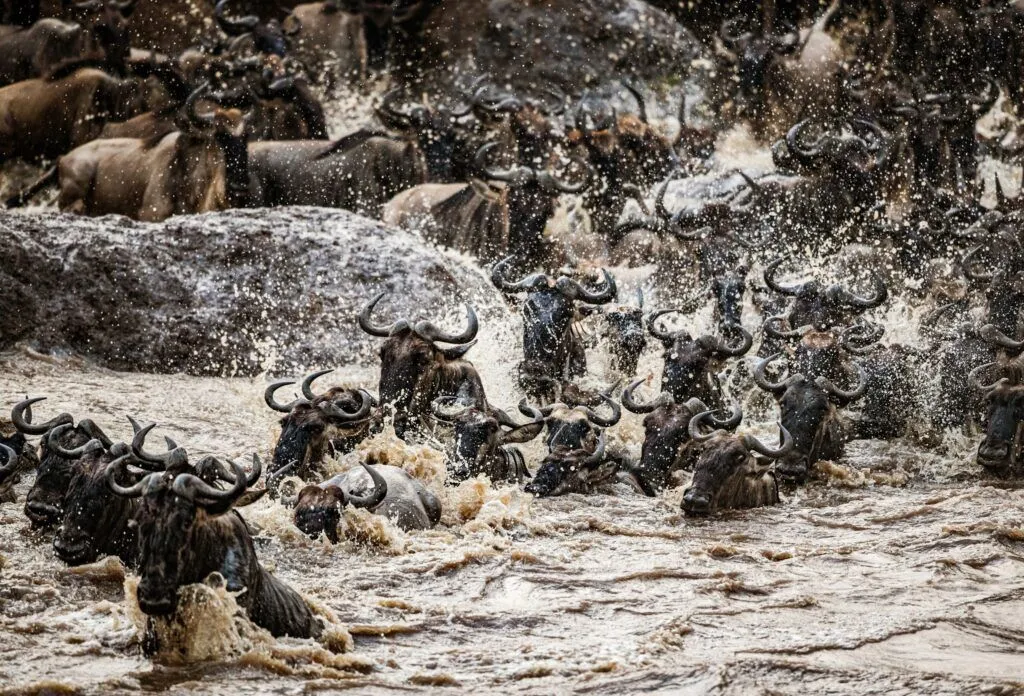Wildebeest Migration
Kenya is the home of the world-famous Masai Mara and the captivating Wildebeest Migration. Every year, thousands of wildebeest and zebras cross the dangerous Mara River in search of greener pastures. And you can witness this natural phenomenon.
LET’S PLAN YOUR DREAM TRIP TOGETHER!
The Wildebeest migration – or Great Wildebeest Migration – is the largest mammal migration in the world. It is a true spectacle to see 1,5 million wildebeests, 400,000 zebras, 12,000 elands and 300,000 Grant’s and Thomson’s gazelles thunder across the endless plains of the Masai Mara National Reserve. Especially since the wildebeests and zebras continuously make their distinctive sounds, making the migration recognisable from great distances.

As such, the epic river crossing at the Mara River is the highlight of the Wildebeest Migration. For some travellers it’s the sole reason to visit Kenya. With approximately 3000 crocodiles in the river, the crossing makes for a real feat for the herds and many of them die. Together with a multitude of leopards and cheetahs preying on the herds along the way, the migrations causes 250,000 wildebeests and zebras to die every year.
ALL YEAR MIGRATION
The Wildebeest Migration is a natural phenomenon that doesn’t recognise borders. Starting in January the herds are in the southern part of the Serengeti National Park in Tanzania. Following the rains (and grassy plains) north, they pass the border with Kenya end of July. Here they subsequently migrate in thousands over the plains of the Masai Mara. Eventually they move back south, over the border back into Serengeti – a total distance of no less than 800 kilometers.


